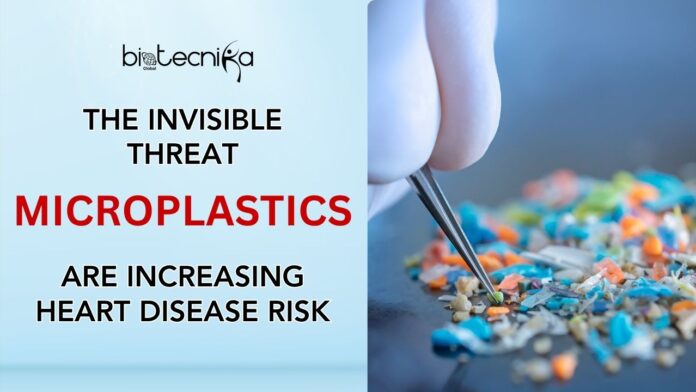Microplastics are Increasing Heart Risks!
Microplastics have become impossible to avoid. They are present everywhere. The air we breathe, the food we eat, and even our bodies are composed of microplastics. Right from the toothpaste and brush we use in the morning to the dinner we eat at night, everything contains microplastics. A new study on Microplastics from the University of California, Riverside, states that small particles may be creating more harm than we ever imagined. Especially, they are harmful to the heart and can cause heart disease.
Researchers have found that the levels of microplastics can directly affect the body. They speed up the development of atherosclerosis, the artery-clogging condition linked to heart attacks and strokes. It is surprising to note that harmful effects were only seen in male mice. This discovery reveals an important difference. It is how microplastics may affect men and women.
Microplastics may come from the items we use every day. Such as packaging, clothing fibers, bottles, and processed foods. Avoiding them completely is impossible since they are found everywhere. Earlier studies had shown that microplastics are present inside the human arteries. But there was no evidence that they were causing damage, or they were simply present in coincidence. The latest research provides strong evidence that microplastics will harm the cells that keep the blood vessels healthy.
In this study, lean and healthy mice were exposed to microplastics for nine weeks. The weight and cholesterol of mice remained unchanged. This shows that heart disease triggers were not involved. Although the male mice developed more plaques in the major arteries, which was up to 624% more in one blood vessel. However, the female mice showed no major plaque increase. This raises questions about whether hormones like estrogen would give some protection.
One of the most important findings was how microplastics affected endothelial cells. Endothelial cells are the thin layer of cells that line every blood vessel. These keep inflammation under control. These cells were the first to encounter circulating microplastics. Gene activity changed to pathways that promote inflammation and plaque formation. These findings were similar to what has been observed in human arterial samples.
Fluorescent microplastics were even found lodged inside plaques. This proves that they can pass through the bloodstream and settle directly in damaged areas. Scientists say that more research is required to understand why male mice are more vulnerable and how different plastics might affect heart health. Microplastic Pollution is increasing. Its effects on the human body may be far deeper than previously believed.
Reducing the exposure to microplastics can only help, as there is no way to remove it completely from the body. Simple steps make a difference. Choose single-use plastics, avoid heavily processed foods, and use safer containers for food and water.
As researchers are continuing to uncover the hidden ways microplastics interact with our cells, this study sends an urgent message that the smallest pollutants may carry the biggest risks for our hearts.





